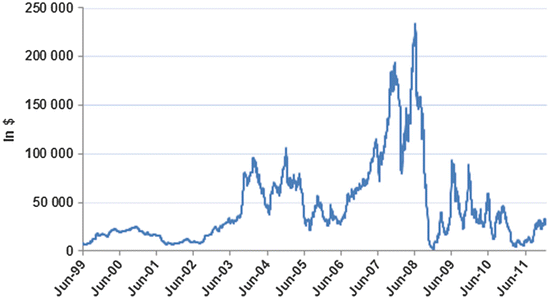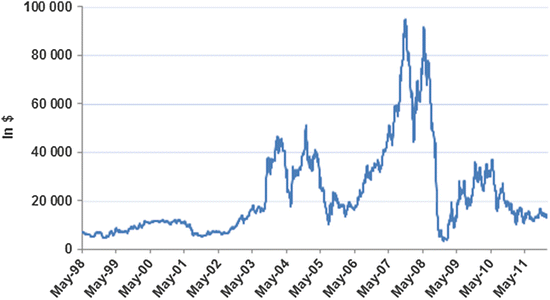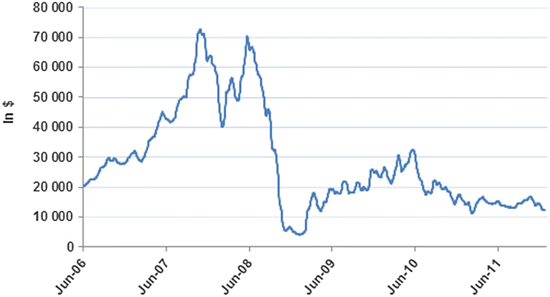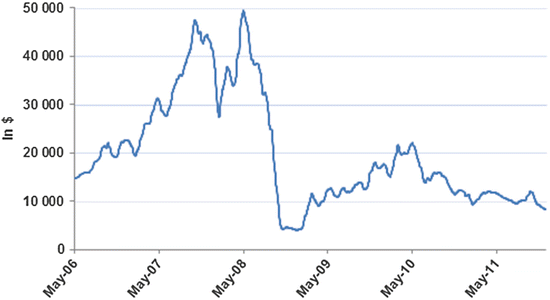Business Acquisitions as a Tool for Proactive Financial Management: The Case of Seanergy Maritime Holdings

NASDAQa
NYSEa
Company
Date of IPO
Company
Date of IPO
Eagle Bulk Shipping
June 2005
Excel Maritime
February 1989
TBS Internationalb
June 2005
Diana Shipping
March 2005
Freeseas
December 2005
Genco Shipping
July 2005
Star Bulk Carriers
December 2005
Paragon Shipping
August 2007
Navios Maritime
Seanergy Maritime
September 2007
Partners
November 2007
Globus Maritime
June 2007
Safe Bulkers
May 2008
Baltic Trading
March 2010
The agglomeration of dry bulk company listings in NASDAQ has to do with the increased transparency in financial reporting and strict corporate governance associated with a listing in the United States. At the same time, the reporting requirements for foreign stock issuers, such as shipping companies, allow flexibility which was particularly relevant in the case of Seanergy. High standards of corporate governance are considered crucial for all company stakeholders and a listing on NASDAQ acts as a testament of increased reporting transparency and accountability to investors. Furthermore, the high level of development in the financial services industry in the U.S. also makes it easier for ship-owners to contact lending institutions, investment banks, underwriters, and potential investors willing to subscribe to a share offering. Additionally, stock exchanges in the U.S. are the largest in terms of transaction volumes and attract a highly diversified investor base, as opposed to other bourses that lack the same international orientation. What is more important is that United States stock exchanges, such as the NASDAQ, enjoy increased liquidity and consequently lower transaction costs. This allows investors to trade in a company’s stock and consequently results in a premium valuation compared to companies listed on less liquid exchanges. Another important reason for choosing the NASDAQ is the presence of an industry peer group that allows analysts to compare companies and provide stock valuations.
At the time of the six initial vessel acquisitions, the BDI index, which measures the cost of transporting dry bulk commodities across various routes, was close to its all-time high and so the vessels earned very high charter rates (see Figs. 7.1, 7.2, 7.3, and 7.4).





Fig. 7.1
The Baltic Capesize Index Time Charter Average

Fig. 7.2
The Baltic Panamax Index Time Charter Average

Fig. 7.3
The Baltic Supramax Index Time Charter Average

Fig. 7.4
The Baltic Handysize Index Time Charter Average
The above four graphs present the time series of average daily time charter rate paid for each of the four major types of dry bulk vessels. From the graphs, it can be seen that market rates for all vessel types peaked in May 2008. The healthy shipping market prevailing at the time enabled Seanergy to adopt a business model based on paying high dividends to shareholders out of internally generated cash flows. Besides, the relationship with the major shareholder and the options to purchase two additional vessels afforded the Company attractive growth prospects. Following the collapse of Lehman Brothers and the ensuing financial crisis, the BDI retreated by about 90 % compared to its previous peak and reached a low in December 2008. This prompted Seanergy’s Management to suspend dividend payments from February 2009 onwards, with a view to conserving the company’s cash during a volatile period. Furthermore, a waiver on the security margin covenant which is calculated as the ratio of fleet market value to net debt was obtained from Marfin Bank, as the precipitous fall in the dry bulk market caused a corresponding decrease in the market value of Seanergy’s vessels. During this time, the aforementioned EBITDA earn-out clause in the purchase agreement of the vessels proved particularly useful as it provided the charterers with the incentive to continue to pay high charter rates for Seanergy vessels, whereas in the absence of that clause, it would clearly be in their interest to renegotiate the charters at considerably lower rates. In this way, Seanergy generated free cash flows throughout the term of the contracts.